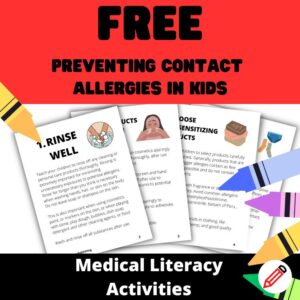
Medical practitioners not only give their patients the finest possible care, but they also teach medical students what they know. Clinical instructors in medical schools must balance providing exceptional patient care while bringing value to undergraduate medical education. The disparity between a “healthy” atmosphere that empowers medical educators to give their students high-quality coaching and the reality of clinical teaching during regular working hours in the clinical environment is not fully understood.
WHAT CAN BE IMPROVED
1. TEACHING METHOD:
We should include real-world learning opportunities in the classroom. The students benefit from being able to apply their academic learning to the clinical setting. Instructing students to enter surgical wards and gather patient histories is one thing we should promote.
A common element of top-notch medical education is patient and student interaction. Students gain knowledge through actively carrying out clinical duties and taking care of patients. Regular ward visits provide the chance to put their studies into practice under the direction of medical experts.
Students will build their self-confidence, and their communication and critical thinking skills will also develop by verbally expressing their thoughts and replying to others.
2. IDEAL LEARNING ENVIRONMENT:
A positive learning environment develops respect, maximizes potential, and inspires interest and excitement. It is one where both students and medical educators feel safe, healthy, and caring.
What makes it ideal?
a) Demonstrate enthusiasm
b) Show empathy
c) Model humility
d) Challenge and support
3. QUERIES and QUESTIONS:
Encourage learners to research their ideas and pose questions to develop their problem-solving abilities and comprehension of academic subjects. Different student groups should be given worksheets with varying levels of complexity.
Additionally, by automatically grouping your students for you, an educational application like Quizalize can save you hours and help you find individual and collective learning gaps in your class.
4. 3-D, ANIMATED LECTURES:
A great way to engage your pupils is to use technology in the classroom, especially the digital tools that today’s youth uses. Students use cutting-edge smartboards or smartphone devices to access visuals and videos that might help them understand academic concepts. Utilizing digital tools as medical education resources could make learning more participatory.
It helps pupils to visualize brand-new academic topics, videos and images on modern whiteboards or mobile devices supporting medical education online. The usage of technology can enhance learning.
5. CLINICAL AND MOCK TESTS:
Important steps in the educational process are assessment and evaluation. In addition to knowledge and technical skills, effective healthcare necessitates analytical and communication abilities, interdisciplinary care, appropriate counseling, and evidence- and system-based care.
Numerous assessment techniques are currently available, including essay writing, modified essay questions (MEQs), checklists, OSCE, constructed response questions (CRCs), multiple choice questions (MCQs), critical reading papers, short case assessments, audits, simulated patient surgeries, the self-assessment, peer assessment, and standardized patients. Analysis has a vital role in positively guiding learning and the curriculum.
CONCLUSION:
The necessities of society and scientific advancements have altered and will continue to influence medical education. Therefore, current tools and techniques are applied in medical schools to enhance clinical performance and increase the standard in the healthcare system.
===
Hamza Athar is currently a third year MBBS (bachelor of medicine, bachelor of surgery) student at QUAID-E-AZAM medical college, Bahawalpur, Pakistan.
REFERENCES
The Importance Of Medical Education https://www.ipl.org/essay/The-Importance-Of-Medical-Education-FK7PCQ74SCFR
Harvard Medical School: Teaching https://meded.hms.harvard.edu/teaching
Tan CE, Jaffar A, Tohit N, Hamzah Z, Hashim SM. Exploring patients’ reasons for participation in a medical education home visit program: a qualitative study in Malaysia. Perspect Med Educ. 2017 Jun;6(3):182-188. doi: 10.1007/s40037-017-0353-1. PMID: 28386758; PMCID: PMC5466570.
Schiekirka-Schwake, S., Anders, S., von Steinbüchel, N. et al. Facilitators of high-quality teaching in medical school: findings from a nation-wide survey among clinical teachers. BMC Med Educ 17, 178 (2017). https://doi.org/10.1186/s12909-017-1000-6
Interested in teaching medical literacy pain free? Shop medical literacy resources!
You may also be interested in the following articles:
How to promote self-directed learning in medical education
How to improve medical education
What makes a good medical teacher
5 Areas of improvement for teaching in medical education
Becoming a good medical educator
Interrogating medical trainees in ward rounds: Fear and the Socratic method
 |
 |
|---|---|
 |
 |

